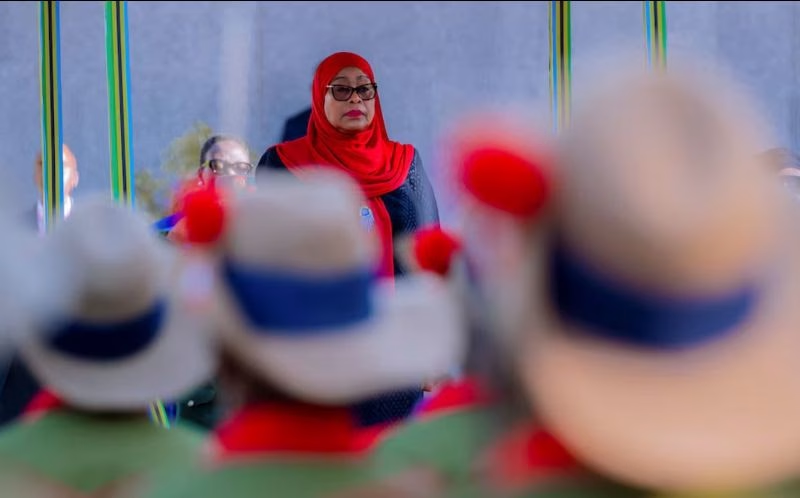- Gender equality recovers to pre-pandemic levels but pace of progress has slowed
- Gender parity in economic participation and opportunity drops from 2022 levels, while political empowerment makes only slight gains
- Iceland remains the most gender-equal country, followed by Norway, Finland, New Zealand and Sweden
- Explore the full report, infographics and more here
Gender parity globally has recovered to pre-COVID-19 levels, but the pace of change has stagnated as converging crises slow progress, according to the World Economic Forum’s Global Gender Gap Report 2023. The report finds that the overall gender gap has closed by 0.3 percentage points compared with last year’s edition. The year of expected parity therefore remains the same as in the 2022 edition: 2154.
The overall progress in 2023 is partly due to improvement in closing the educational attainment gap, with 117 out of 146 indexed countries now having closed at least 95% of the gap. Meanwhile, the economic participation and opportunity gap has closed by 60.1% and the political empowerment gap by just 22.1%.
Parity has advanced by only 4.1 percentage points since the first edition of the report in 2006, with the overall rate of change slowing significantly. Closing the overall gender gap will require 131 years. At the current rate of progress, it will take 169 years for economic parity and 162 years for political parity.
“While there have been encouraging signs of recovery to pre-pandemic levels, women continue to bear the brunt of the current cost of living crisis and labour market disruptions,” said Saadia Zahidi, Managing Director, World Economic Forum. “An economic rebound requires the full power of creativity and diverse ideas and skills. We cannot afford to lose momentum on women’s economic participation and opportunity.”
The Global Gender Gap Report, now in its 17th edition, benchmarks the evolution of gender-based gaps in four areas: economic participation and opportunity; educational attainment; health and survival; and political empowerment. It is the longest-standing index which tracks progress on closing these gaps since its inception in 2006. It also explores the impact of recent global shocks on the gender gap crisis in the labour market.
Global and regional highlights 2023
Iceland is the most gender-equal country in the world for the 14th consecutive year and the only country to have closed more than 90% of its gender gap. While no country has yet achieved full gender parity, the top nine ranking countries have closed at least 80% of their gap.
The top 10 countries are:

Europe has the highest gender parity of all regions at 76.3%, overtaking North America since the 2022 edition. One-third of countries in the region rank in the top 20 and over half (56%) have reached at least 75% parity. Progress is mixed, however, with 10 countries, led by Estonia, Norway and Slovenia, having made at least a 1 percentage point improvement, while another 10 countries – including Austria, France and Bulgaria – registered declines of at least 1 percentage point.
North America ranks second, with 75% of the gap closed, representing a 1.9 percentage point decline since the previous edition. This can be partially attributed to the 7.7 percentage point decline in the political empowerment gap, which now stands at 26.1%. North America has achieved the highest gender parity score among all regions, 77.6%, in closing the economic participation and opportunity gap.
Latin America and the Caribbean has bridged 74.3% of its overall gender gap, registering a 1.7 percentage point increase in overall gender parity since last year. With incremental progress on gender parity since 2017, the region now has the third-highest level of parity. Nicaragua (81%), Costa Rica (79.3%) and Jamaica (77.9%) register the highest parity scores in this region.
Eurasia and Central Asia has closed 69% of its gender gap, though progress has stagnated since the 2020 edition of the report. Compared to other regions, Eurasia and Central Asia has the lowest gender parity (10.9%) in political participation and registered a 1 percentage point setback since 2022. However, progress in closing the economic participation and opportunity gap has been steadily increasing (68.8%), with a 0.5 percentage-point improvement since the last edition.
In East Asia and Pacific progress on parity has been stagnating for over a decade and the region registers a 1.6 percentage point decline since the last edition. While 11 out of 19 countries have improved their scores since the last edition, eight countries in the region have registered declines in parity. New Zealand, the Philippines and Australia have the highest levels of parity, with Australia and New Zealand also being the two most improved economies in the region.
Sub-Saharan Africa has closed 68.2% of the gender gap, representing a 0.1% overall improvement, but progress in the region has been uneven. Namibia, Rwanda and South Africa, along with 13 other countries, have now closed more than 70% of the overall gender gap, but eight countries in the region registered declines in parity of 0.5% or more.
Southern Asia has reached 63.4% gender parity, representing a 1.1 percentage point improvement since the last edition. This can be partially attributed to improved scores in populous countries such as India, Pakistan and Bangladesh. Southern Asia has the largest economic participation and opportunity gender gap (37.2%) of all regions though there has been an improvement of 1.4 percentage points since the last edition.
Middle East and North Africa remains the region furthest from parity, with 62.6% of the gender gap closed. This represents a 0.9% point decline in parity since the last edition. The United Arab Emirates (71.2%), Israel (70%) and Bahrain (66.6%) have achieved the highest parity in the region, while five countries, led by Bahrain, Kuwait and Qatar, have increased their parity by 0.5% or more.
Glass ceiling remains intact
While women have entered the labour force at higher rates than men globally, leading to a small recovery (63%-64%) in gender parity in the labour-force participation rate since the 2022 edition, gaps in the labour market are persistently wide. Compounding these patterns, women continue to face higher unemployment rates than men with a global unemployment rate at around 4.5% for women and 4.3% for men
Global data provided by LinkedIn covering 163 countries shows that while women account for 41.9% of the workforce in 2023, the share of women in senior leadership positions (director, vice-president or C-suite) is nearly 10 percentage points lower at 32.2%. While the proportion of women hired into leadership positions has been steadily increasing by about 1% per year globally for the past eight years, this trend reversed in 2023, regressing to 2021 levels.
Across the labour markets of the future, STEM jobs are typically well remunerated and are expected to grow in significance and scope. Yet LinkedIn data suggests that women remain significantly underrepresented in the total STEM workforce at just 29.2%. In artificial intelligence, talent availability has surged, increasing sixfold between 2016 and 2022, yet the percentage of women working in AI today is approximately 30%, just 4 percentage points higher than it was in 2016.
“We’re consistently seeing that women bear the brunt of economic shocks and headwinds. We know that these problems are systemic – which means we need a systemic response,” said Sue Duke, Head, Global Public Policy, LinkedIn. “Inclusive hiring practices, visibility of women in top jobs, and upskilling and career growth opportunities for women, particularly in high-growth and high-earning sectors like STEM, will help to course correct this worrying trend, but we need to act now.”
Across online learning, the persistent digital divide is one of the factors leading to inequality of opportunity between men and women learners. Data from Coursera suggests that, aside from teaching and mentoring courses, there is disparity in enrolment in every skill category. Enrolment in technology skills such as technological literacy (43.7%) and AI and big data (33.7%) sit well below 50% parity and progress has been sluggish. Across all skill categories, the gender gaps tend to widen as proficiency levels increase. However, data suggests that when women do enrol, they tend to attain most proficiency levels in skill categories studied in less time compared to men.
“Our research highlights a significant finding. Despite lower enrolment rates, women are developing skills at a faster pace than their male counterparts,” said Jeff Maggioncalda, CEO, Coursera. “It’s a hopeful indication that greater access to online learning can help address skills gaps that can accelerate women’s advancement in the workplace.”
Closing the gender gap
The Global Gender Gap Report 2023 highlights increasing women’s economic participation and achieving gender parity in leadership, in both business and government, as two key levers for addressing broader gender gaps in households, societies and economies. Collective, coordinated and bold action by private and public sector leaders will be instrumental in accelerating progress on gender parity and igniting renewed growth and greater resilience.
The economic and business case is clear. Making progress on closing the gender gap is crucial for ensuring inclusive, sustainable economic growth. At an individual organization level, gender strategy is seen as essential to attracting the best talent and ensuring long-term economic performance, resilience and survival. Evidence indicates that diverse groups of leaders make more fact-based decisions that result in higher-quality outcomes. At an economy-wide level, gender parity has been recognized as critical for financial stability and economic performance.
The Gender Parity Accelerators bring government and business together to advance economic parity, focusing on increasing women’s participation in the workforce, closing the gender pay gap and helping more women advance into leadership roles and develop in-demand skills. The model has been adopted in 14 economies to date and a learning network brings together these countries as well as knowledge partners to collectively synthesize lessons and learnings for the way forward. In addition, the DEI Lighthouse Programme is designed to pragmatically identify proven, effective DEI initiatives from companies across industries and geographies and to share key lessons learned with business and public sector leaders around the world.











